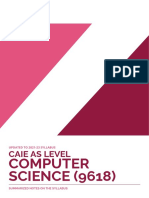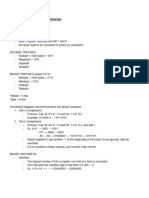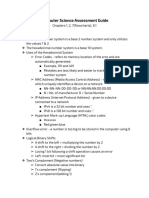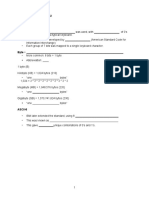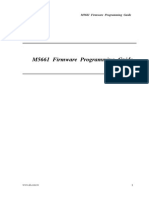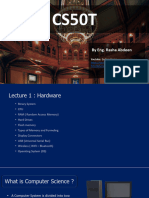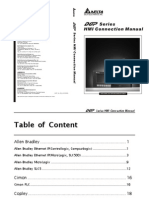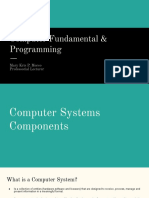0% found this document useful (0 votes)
5 views8 pagesCH 1 Notes
The document provides an overview of fundamental concepts in computer science, including data representation such as bytes, binary coded decimal (BCD), ASCII, and Unicode. It explains binary number systems like one’s and two’s complement, as well as image formats like vector graphics and bitmap images, detailing their properties and differences. Additionally, it covers audio sampling, resolution, and compression techniques, distinguishing between lossy and lossless compression methods.
Uploaded by
Syeda FatimaCopyright
© © All Rights Reserved
We take content rights seriously. If you suspect this is your content, claim it here.
Available Formats
Download as PDF, TXT or read online on Scribd
0% found this document useful (0 votes)
5 views8 pagesCH 1 Notes
The document provides an overview of fundamental concepts in computer science, including data representation such as bytes, binary coded decimal (BCD), ASCII, and Unicode. It explains binary number systems like one’s and two’s complement, as well as image formats like vector graphics and bitmap images, detailing their properties and differences. Additionally, it covers audio sampling, resolution, and compression techniques, distinguishing between lossy and lossless compression methods.
Uploaded by
Syeda FatimaCopyright
© © All Rights Reserved
We take content rights seriously. If you suspect this is your content, claim it here.
Available Formats
Download as PDF, TXT or read online on Scribd
/ 8



































